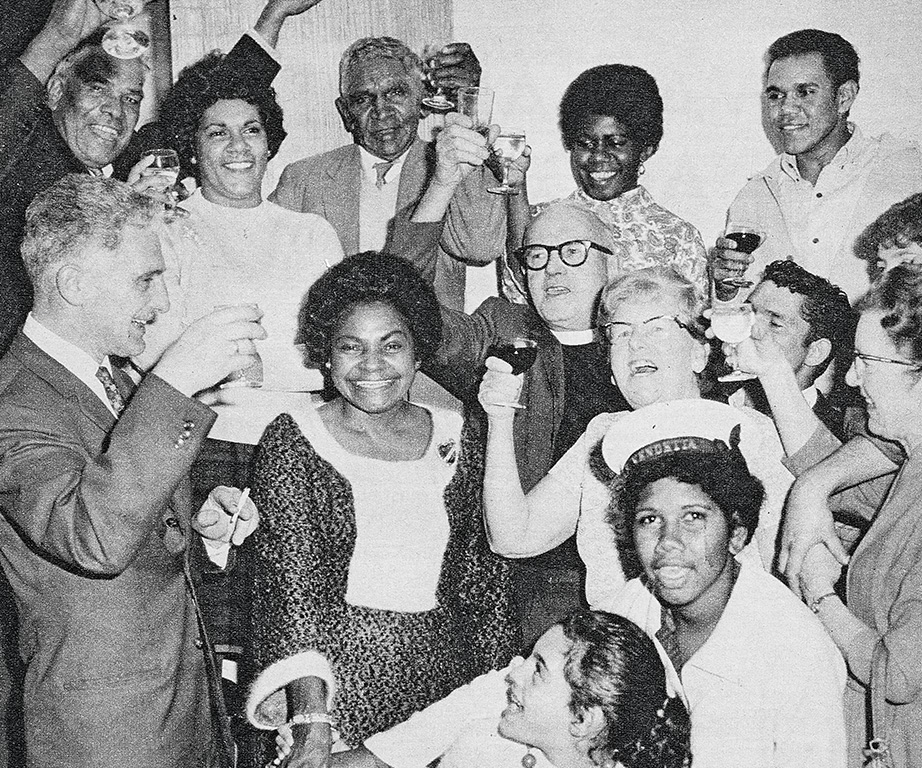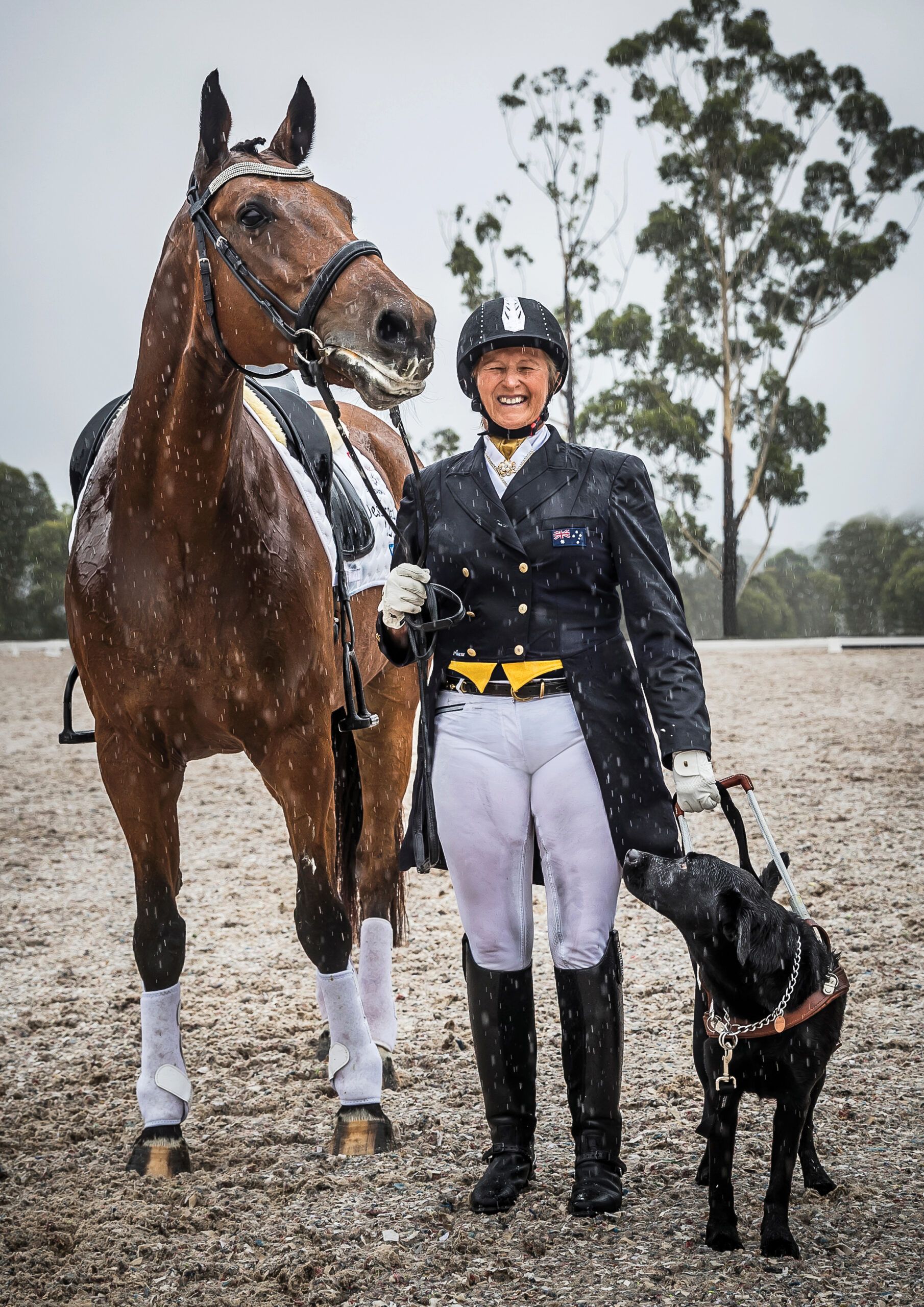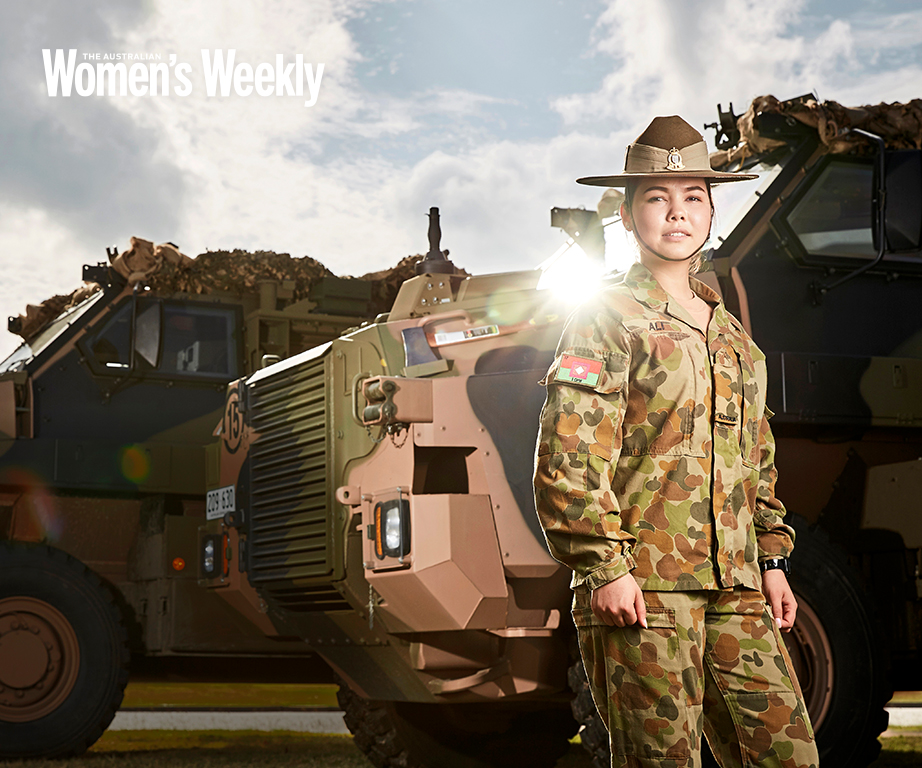Happy NAIDOC week! To celebrate this incredible week, we are reliving some of The Australian Women’s Weekly’s greatest stories which recognise Aboriginal and Torres Strait Islander history and culture #BecauseofHerWeCan.
It was late one night in 1956. A phone was ringing in a bungalow in Frenchs Forest, on Sydney’s northern suburban bushland fringe.
Faith Bandler’s one-year-old daughter, Lilon, was tucked up in her cot and Faith and her husband, Hans, were switching off lights and getting ready for bed. On the phone’s first ring, Faith and Hans shot each other knowing looks. It had to be Jessie. Faith’s friend, Jessie Street, always rang either first thing in the morning or appallingly late at night. What they didn’t know was that this call would change Australia.
Faith remembered the conversation years later and there wasn’t much preamble. “‘You can’t get anywhere without a change in the Constitution,’ Jessie began, ‘and you can’t get that without a referendum. You’ll need a petition with 100,000 signatures. We’d better start on it at once.’ And we did,” Faith said.
Jessie Street was a feminist and a peace and human rights activist who had been Vice-President of the United Nations Commission on the Status of Women. She, Faith and their good friend, Pearl Gibbs, had recently formed an organisation called the Aboriginal-Australian Fellowship.
“I remember my mother telling me that she carried this crumpled piece of paper around in her handbag for a while,” says Faith’s daughter, Lilon. “On it, Jessie had written the parts of the Constitution that needed to be changed and Mum had forgotten all about it until Jessie called and said, ‘Look, we really need to talk about this and how we’re going to get it off the ground’.”

“That pot was just waiting for the gas to be lit under it”, says Dr Lilon Bandler.
Faith’s father was born in Vanuatu and brought to work as a slave in Australian cane fields. Her mother was Indian-Scottish and raised Faith in an environment where education and a social conscience were paramount. Faith had met Pearl Gibbs through their mutual interest in Indigenous workers’ rights. Pearl had lobbied governments, addressed rallies and was instrumental in the first Day of Mourning held on January 26, 1938.
“Here was a woman who understood the importance of high- level political action,” says Lilon. “That pot was just waiting for the gas to be lit under it.” When the three women met, the call for a referendum became that spark.
According to Jessie, two changes to the Constitution were needed to improve the lives of Aboriginal people.
Prior to 1967, the Constitution gave the federal government power to make laws governing “people of any race, other than the aboriginal race”, which left Indigenous Australians at the mercy of a higgledy-piggledy collection of overwhelmingly racist legislation which varied from state to state.
There were laws that restricted Aboriginal people’s freedom of movement, their freedom to marry, to speak their languages, to meet in numbers greater than six – and that’s just the beginning. Jessie believed that, for real change to happen, those laws needed to be repealed and the federal government needed the power to make new laws for Indigenous Australians. Second, the Constitution stated that Aboriginal people should not be counted alongside other members of the population in the national census. Jessie insisted it was imperative they be counted, not just in the interests of equality, but because a government could not improve the lot of a people they knew nothing about.
It was a lofty goal and a complex one. Since 1901, 44 changes to the Constitution have been proposed, but only eight passed. And, as Lilon recalls, “Australia was a very conservative country. It wasn’t just politically and economically conservative, it was conservative in that resistance to change ran deep. People voted largely for whomever their parents had voted. So it was extraordinary that [my mother, Pearl and Jessie] thought they could do this.”
The success of the 1967 campaign lies partly in the fact that these three women didn’t expect to change Australia alone or overnight.
“They understood that this would take years and they didn’t have a problem with that,” says Lilon. In fact, it took a decade of hard work. “They understood that they would have to change people’s minds and people’s ways of seeing things, and that wasn’t going to happen through a quick marketing campaign.”
In mid-February 1958, a new organisation, the Federal Council for Aboriginal Advancement, was born (it later became the Federal Council for the Advancement of Aborigines and Torres Strait Islanders, FCAATSI). All three women joined and the council became the driving force behind the campaign for a referendum. The poet, Kath Walker (later known as Oodgeroo Noonuccal), became
a campaign director and she, Faith, Pearl and legions of others travelled constantly, speaking everywhere from town hall meetings to Country Women’s Association afternoon teas.
Arts administrator, actor and writer Rhoda Roberts , AO, was eight years old in 1967. Her father was a Church of Christ minister, Frank Roberts Jnr, who had studied with Martin Luther King and been inspired by the American civil rights movement.
Rhoda remembers often waking up late at night to find “Nana [Kath] Walker, Faith Bandler, Doug Nicholls – all these people in our house. Dad was a regional rep for FCAATSI and my mum, Muriel, did the typing and admin. They’d all meet at our place and the kids would fold yellow leaflets for the Yes campaign.

Rhoda Roberts AO
“There were a lot of meetings around the referendum. We didn’t have much money, so we didn’t always have a car, and I remember Dad hitchhiking to Sydney, which was 600 kilometres away … The first time I ever heard my mum and dad argue was during the referendum campaign. I remember my mother saying, ‘I am tired of hearing about this damn referendum.'”
Faith, meanwhile, was on a mission to address every VIEW club in Australia. “VIEW stood for Voice Interests and Education of Women,” Lilon explains. “They all gave her a teaspoon with their crest on it and we ended up with a lot of those teaspoons. They were little meetings of 20 or 30 women. She would go, dressed to perfection, and she would sit and talk with anybody who asked her. She believed that if you threw a stone into a pool, somebody would take up that stone and throw it into another pool.”
Faith could be persuasive, Lilon believes “because she engaged in conversation in a real way. It wasn’t like when you go to check-out at the supermarket and somebody says, ‘Have a nice day’. She never had those sorts of conversations. She was interested in people. She liked listening to them and talking with them. She could be persuasive because she had understood what was important to the person she was talking to. She listened before she spoke.”
Also on the road, year after year, were Lowitja O’Donoghue in South Australia and Joyce Clague in NSW. Of course, there were men involved in the campaign – hundreds of them – but the movement attracted a new generation of young, politically savvy women and, remarkably for the time, many rose to senior roles.
“Women were doing the most incredible things,” says Shirley Peisley, who worked with Lowitja O’Donoghue and others on the campaign in South Australia. “They didn’t have huge educations, they weren’t Rhodes Scholars, but they were aware of the things that were wrong and they were prepared to stand up and speak out about those things. They did that at a time when most Aboriginal women weren’t encouraged to lead the way and I admired them.”
“They ran in parallel, these new women’s and social justice movements,” says Lilon. “I can remember my mother reading Betty Friedan’s The Feminine Mystique with a group of friends. Every week, they would talk about another chapter of this book that was covered in underlinings and thoughts scribbled in the margins. Feminism and social justice weren’t seen as separate. It was all part of the same thing.”
There were other movements that contributed to the growing awareness of Indigenous rights. In 1963, the Yolngu people of Yirrkala in the Northern Territory presented the government with a land rights petition on bark. Then in 1966, Vincent Lingiari led a strike and walk-off of Aboriginal pastoral workers on the Wave Hill cattle station owned by the British Vestey family, protesting their wages and conditions, and the occupation of Gurindji land. Prime Minister Gough Whitlam famously returned their land in 1975 and the Gurindji struggle was immortalised in Kev Carmody and Paul Kelly’s anthem, From Little Things Big Things Grow.
Meanwhile, in 1965, Charles Perkins led a busload of fellow students and an ABC reporter through NSW country towns, where they challenged the racial segregation in restaurants, hotels and public swimming pools. Images from the Freedom Ride – and the living conditions of Aboriginal people in rural communities – were beamed into Australian homes on the evening news.
Another turning point came one afternoon at Parliament House in Canberra, when then Prime Minister, Robert Menzies, offered Kath Walker a drink from his bar. “If we were in Queensland, you could be jailed for that,” she responded. The PM was shocked and began to reconsider the rights of Indigenous people.
Over Easter of 1967, FCAATSI held its annual conference at Telopea Park High School in Canberra. People came from all around – by bus and train, hitchhiking, sharing cars, sleeping on the floor and six-to-a-room in the Brassey Hotel, passing buffet breakfasts out the window to those who had slept in their cars. The final preparations were made for staffing polling booths and distributing how- to-vote cards and, on referendum day, Shirley Peisley remembers people “stopping outside the polling booth to chat and holding hands with us. There was such a feeling of optimism in the air. We knew that all our hard work had created this kind of magic”.
On May 27, 1967, 90.77 per cent of Australian voters returned a “yes” vote and the referendum was passed.
“We went mad with excitement,” Faith said. Shirley Peisley didn’t go back to work after the result was announced and everyone she knew celebrated into the night.
Fifty years on, talk of another referendum is in the wind and the achievements of the ’67 campaign are being reassessed.
Joyce Clague’s husband, Colin, says that while, technically, it was about changing “a couple of pieces of the Constitution”, the ’67 referendum was “always about more than that”. He sees it now as “the vehicle for the beginning of change.”
“We’ve got a long way to go,” says Rhoda, “but that vote did change things. I think about the little girl I was and her world did change. Here I am now, Head of First Nations Programming at the Sydney Opera House and Director of the Boomerang Festival at Bluesfest. At the time my granny cast that vote, she was not allowed to speak her language or dance her culture or sing up country, but today we’re relishing and reinvigorating our culture.
“In 1967, the majority of Australians assumed Aboriginal people were childlike or drunks or savages. When they saw the truth and they saw we were not even counted as human beings by the government, I think most people were pretty horrified.”
The campaign for the 1967 referendum introduced Indigenous people to other Australians in a way that had never before been possible.
“My mother and her co-campaigners used to celebrate every time Aboriginal people were in the paper because they weren’t celebrated at all. It was as if they didn’t exist,” says Lilon, whose mum passed away in 2015. “I think the referendum changed that.”
The referendum also provided crucial data. “I’m a general practitioner and an academic, and my curriculum area is Indigenous health,” says Lilon. “That didn’t exist in 1967. I look at statistics around Aboriginal and Torres-Strait Islander health and we only have those because we’re all [now] counted in the census.”
What does Lilon say to those who believe the 1967 referendum was nothing more than symbolism, smoke and mirrors?
“I think Constitutional change was important,” she says. “It is our basic document and it should be an accurate reflection of what we value … They were momentous times and Australia should be proud of what those campaigners achieved.”
This article originally appeared in the May 2017 edition of The Australian Women’s Weekly.


